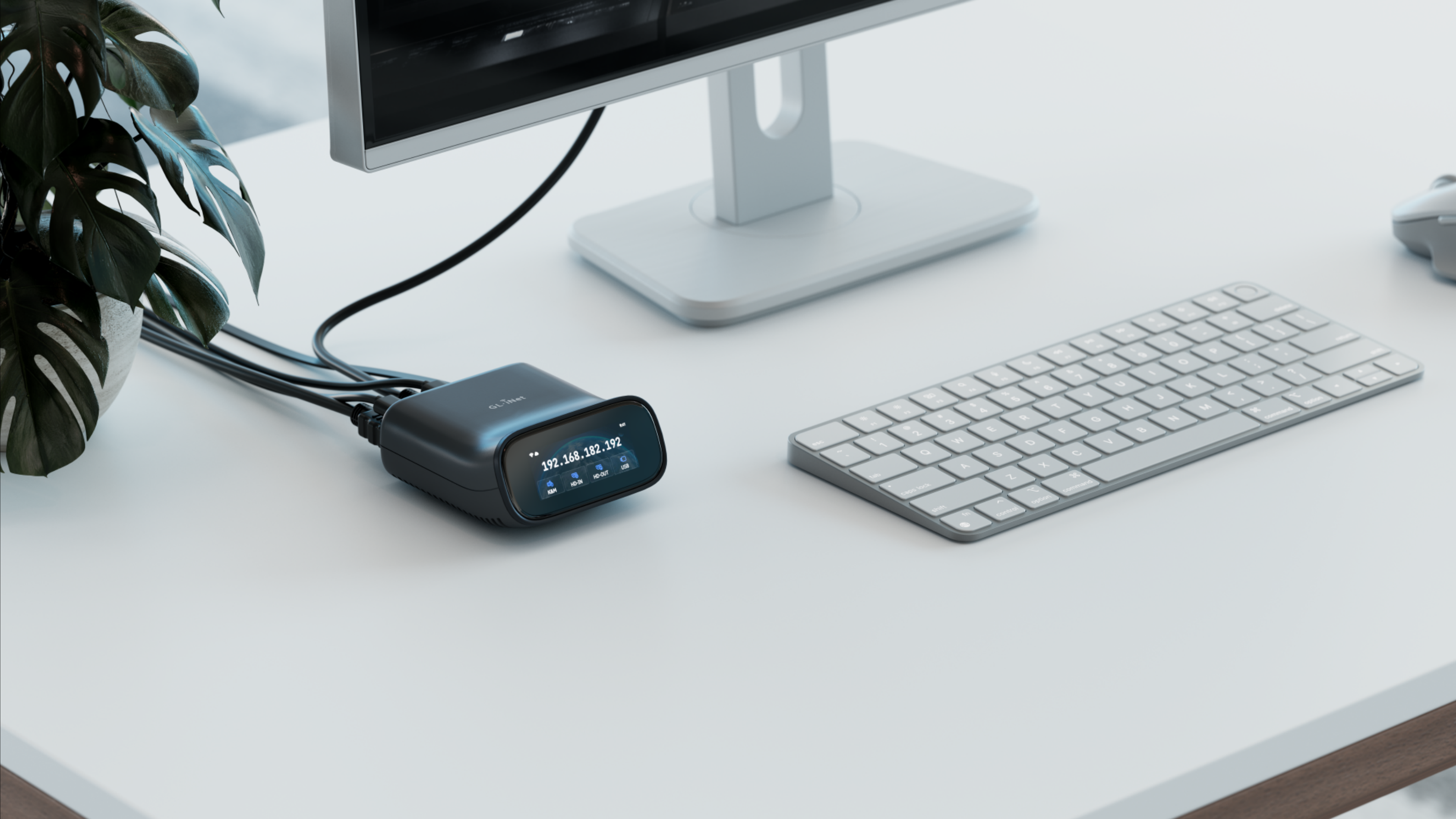Comet Pro (GL-RM10) User Guide¶
Comet Pro (GL-RM10) is a remote KVM over Wi-Fi solution. It is powered by a Quad-Core A53 CPU, with 1GB DDR3 memory and 32GB eMMC storage for smooth performance. Its touchscreen lets you check the device's IP address at a glance and perform basic tasks like Wi-Fi setup.
For connectivity, it supports Dual Band Wi-Fi 6 (stable, high-speed) and video passthrough (lossless signal transmission), plus 4K@30FPS video output for HD visuals during remote control. Whether for personal or professional use, Comet Pro is a top pick for efficient remote device management.
